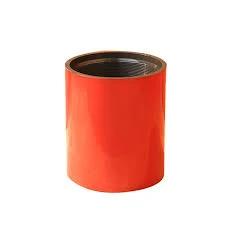- Afrikaans
- Albanian
- Amharic
- Arabic
- Armenian
- Azerbaijani
- Basque
- Belarusian
- Bengali
- Bosnian
- Bulgarian
- Catalan
- Cebuano
- Corsican
- Croatian
- Czech
- Danish
- Dutch
- English
- Esperanto
- Estonian
- Finnish
- French
- Frisian
- Galician
- Georgian
- German
- Greek
- Gujarati
- Haitian Creole
- hausa
- hawaiian
- Hebrew
- Hindi
- Miao
- Hungarian
- Icelandic
- igbo
- Indonesian
- irish
- Italian
- Japanese
- Javanese
- Kannada
- kazakh
- Khmer
- Rwandese
- Korean
- Kurdish
- Kyrgyz
- Lao
- Latin
- Latvian
- Lithuanian
- Luxembourgish
- Macedonian
- Malgashi
- Malay
- Malayalam
- Maltese
- Maori
- Marathi
- Mongolian
- Myanmar
- Nepali
- Norwegian
- Norwegian
- Occitan
- Pashto
- Persian
- Polish
- Portuguese
- Punjabi
- Romanian
- Russian
- Samoan
- Scottish Gaelic
- Serbian
- Sesotho
- Shona
- Sindhi
- Sinhala
- Slovak
- Slovenian
- Somali
- Spanish
- Sundanese
- Swahili
- Swedish
- Tagalog
- Tajik
- Tamil
- Tatar
- Telugu
- Thai
- Turkish
- Turkmen
- Ukrainian
- Urdu
- Uighur
- Uzbek
- Vietnamese
- Welsh
- Bantu
- Yiddish
- Yoruba
- Zulu
Pup Joint Applications in Oil and Gas Drilling Techniques for Enhanced Efficiency
The Evolution and Impact of Pup Joint Drilling in Oil and Gas Operations
Pup joint drilling is a crucial aspect of oil and gas operations, particularly in the realm of drilling engineering. A pup joint, essentially an added component of drill pipe or casing, typically ranges from 2 to 10 feet in length. It serves to make fine adjustments in the string of pipes used while drilling, ensuring the overall operation is as efficient and effective as possible. This article will delve into the importance, applications, and future of pup joint drilling in the exploration and production of hydrocarbons.
Understanding Pup Joints
In any drilling operation, the precise length and configuration of the tubulars used can significantly affect the outcome of the process. Pup joints facilitate this by allowing engineers to make necessary adjustments to the drill string and casing without the need to completely remove and replace them. This capability is particularly useful when dealing with unexpected geological formations or when adhering to specific engineering designs.
Pup joints are integral when achieving the desired depth or when modifying the angle of the wellbore. Their utility in both vertical and horizontal drilling operations cannot be overstated. As drilling technologies continue to advance, the role of pup joints has expanded, making them an essential part of modern drilling strategies.
Applications in Drilling Operations
1. Customizing Drilling Profiles One of the primary applications of pup joints is to customize the drilling profile. Drilling engineers can use these joints to ensure that the drill string meets the specific requirements of the geological formation being targeted. A customized approach can enhance the drilling efficiency, reduce costs, and minimize the risk of equipment failure.
2. Facilitating Depth Adjustments In circumstances such as borehole enlargement or unexpected geological shifts, pup joints allow operators to make incremental depth adjustments swiftly. This flexibility can save time and resources by avoiding the need for excessive re-drilling or adjustments to the overall drilling plan.
3. Reducing Stress on Equipment By properly utilizing pup joints, the stress distributed across the entire drill string can be optimized. This alleviates the chances of equipment failure due to excessive load and increases the longevity of pipes and joints involved in the drilling process.
pup joint drilling

The Economic Impact
The use of pup joints contributes significantly to the economic efficiency of drilling operations. By allowing for rapid modifications and adjustments, they reduce downtime and increase productivity. With the oil and gas industry under constant pressure to reduce costs and enhance production, optimizing drilling performance via pup joints is a prudent strategy.
Moreover, the overall lifecycle management of drilling equipment is improved. By minimizing the wear and tear on more expensive elements of the drill string, pup joints facilitate longer-lasting equipment, hence reducing operational expenses.
The Future of Pup Joint Drilling
As technology evolves, the pup joint's design and application are set to become even more sophisticated. Innovations in materials science may yield stronger, lighter pups that further enhance drilling efficiency. Additionally, the integration of digital technologies and real-time data analytics will allow for better decision-making and forecasting in drilling operations.
The future of drilling will likely see greater reliance on adaptive techniques that incorporate advanced pup joint solutions, enhancing flexibility and responsiveness to varying conditions.
Conclusion
In conclusion, pup joint drilling is an indispensable facet of the oil and gas industry that enhances operational efficiency, reduces costs, and promotes safety. As the sector continues to evolve, the role of pup joints will only grow, necessitating ongoing innovation and adaptation in their design and application. With a focus on improving drilling strategies and outcomes, the industry can look forward to a future where pup joints play an even more pivotal role in hydrocarbon exploration and production.
-
Tubing Pup Joints: Essential Components for Oil and Gas OperationsNewsJul.10,2025
-
Pup Joints: Essential Components for Reliable Drilling OperationsNewsJul.10,2025
-
Pipe Couplings: Connecting Your World EfficientlyNewsJul.10,2025
-
Mastering Oilfield Operations with Quality Tubing and CasingNewsJul.10,2025
-
High-Quality Casing Couplings for Every NeedNewsJul.10,2025
-
Boost Your Drilling Efficiency with Premium Crossover Tools & Seating NipplesNewsJul.10,2025







